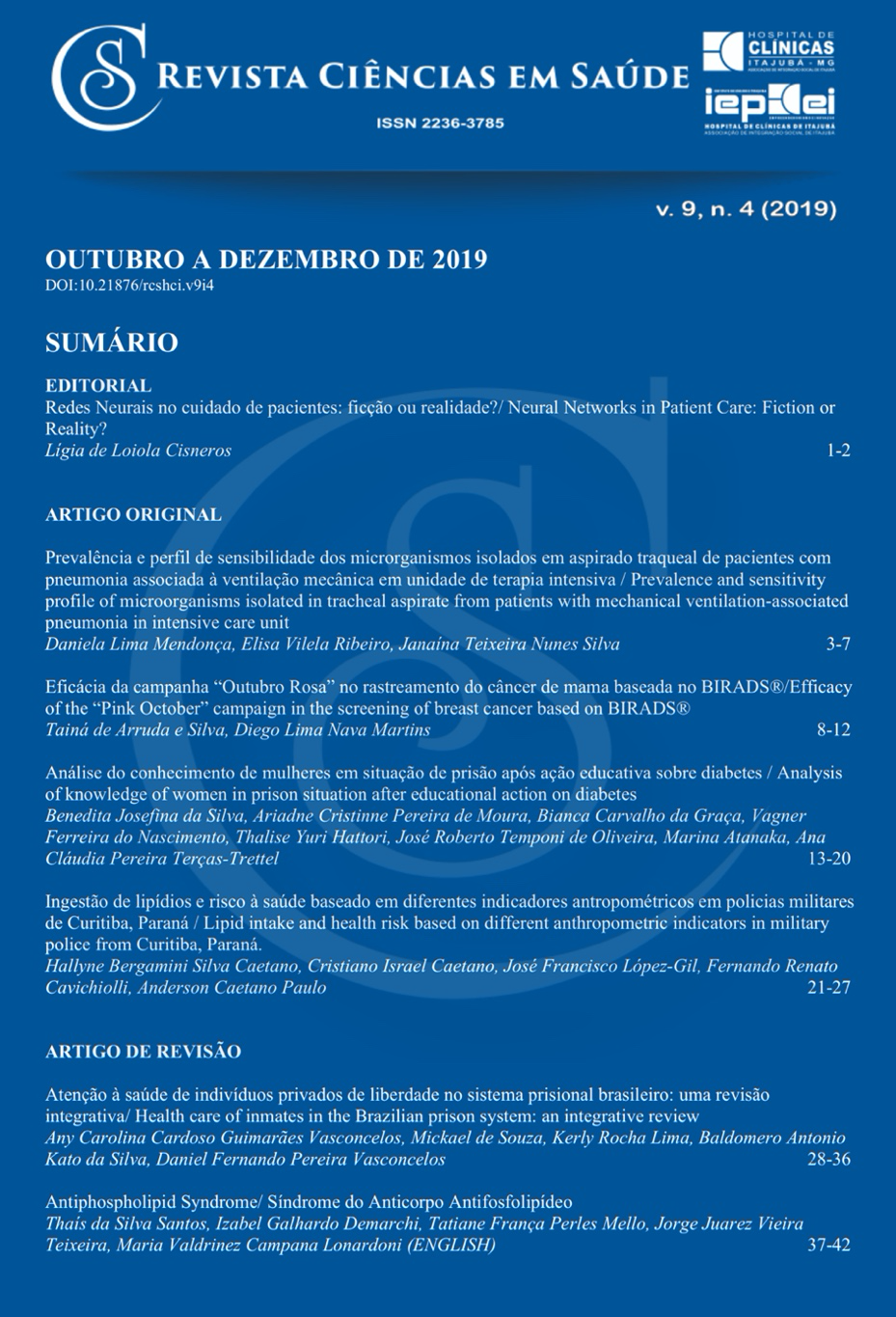Lipid intake and health risk based on different anthropometric indicators in military police from Curitiba, Paraná
Main Article Content
Abstract
Objective: To verify the relationship between lipid intake and health risk based on different anthropometric indicators in a sample of military police officers from Curitiba (Paraná). Methods: The study consisted of 121 military police officers (96 men and 25 women), belonging to the Community School Patrol Battalion, working in the city of Curitiba. To verify the intake of lipids (total and saturated), the Food Frequency Questionnaire was applied. Anthropometric data were obtained by body measurements according to the ISAK protocol. Finally, binary logistic regression was made between coronary heart disease risk and lipid intake. Results: The body mass index (BMI) indicated that 67.8% of the police were overweight. The waist-height ratio (WHtR) of the sample showed a 43% percentage with cardiovascular risk. Also, 66.9% of military police portrayed excessive consumption of total lipids, as well as 74.4% with inadequate saturated lipid intake. Military police officers with lipid consumption greater than 30% and who had increased WHtR were more than twice as likely to have a risk of cardiovascular disease (OR = 2.28; 95% CI = 1.02 - 5.09). Conclusion: there was a high prevalence of inadequate lipid consumption and health risk in the patients studied. Public policies that make military police aware of the risks associated with excessive lipid consumption are necessary.
Article Details
Authors maintain copyright and grant the HSJ the right to first publication. From 2024, the publications wiil be licensed under Attribution 4.0 International 
 , allowing their sharing, recognizing the authorship and initial publication in this journal.
, allowing their sharing, recognizing the authorship and initial publication in this journal.
Authors are authorized to assume additional contracts separately for the non-exclusive distribution of the version of the work published in this journal (e.g., publishing in an institutional repository or as a book chapter), with acknowledgment of authorship and initial publication in this journal.
Authors are encouraged to publish and distribute their work online (e.g., in institutional repositories or on their personal page) at any point after the editorial process.
Also, the AUTHOR is informed and consents that the HSJ can incorporate his article into existing or future scientific databases and indexers, under the conditions defined by the latter at all times, which will involve, at least, the possibility that the holders of these databases can perform the following actions on the article.
